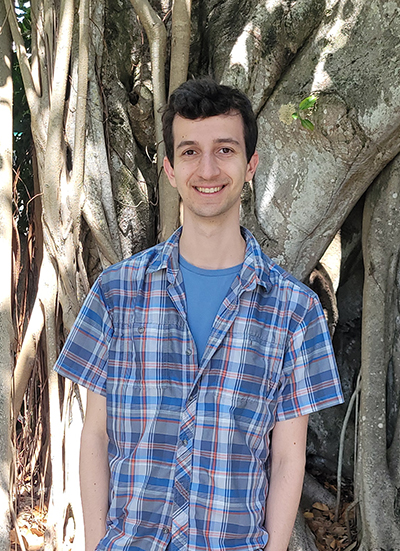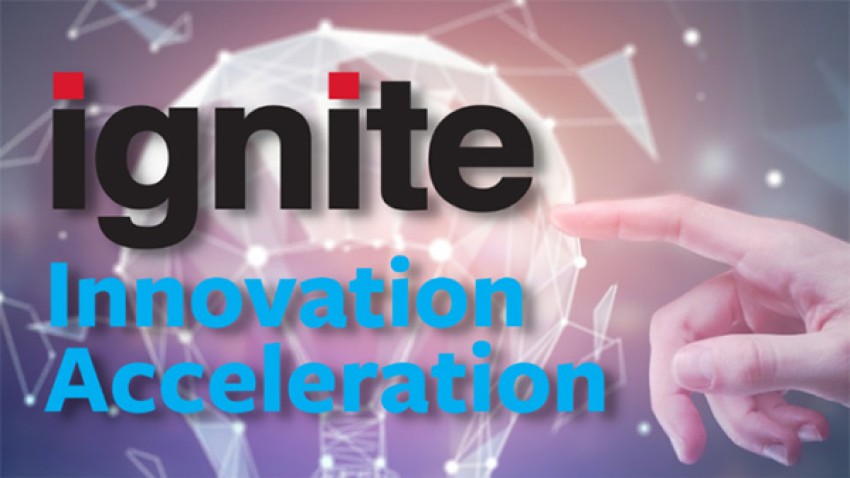Benjamin A. Ash ’26: Goldwater Scholar for 2024

Spotlight on AEP sophomore Ben Ash: Harnessing the power of light

Benjamin A. Ash ’26, a sophomore in the School of Applied and Engineering Physics who works in Professor Peter Mc Mahon’s lab, has recently been awarded a Goldwater Scholarship for 2024. Students must be nominated by their academic institutions to compete for the Goldwater scholarships, named after former Arizona Senator Barry Goldwater. Ben is one of two Cornell students, and one of 64 engineering students nationwide who were awarded the scholarship in 2024 and will receive up to $7,500 per full academic year for the next two years.
Ash, who is from Pittsburgh, Pennsylvania, chose Cornell because of the range of world-class research facilities and the wide variety of courses available to students. “I feel quite fortunate to be able to take upper-level courses in photonics, nanofabrication and metamaterials as an undergraduate,” said Ash. “Also, there are amazing research facilities at Cornell. I was particularly excited that the Cornell Nanoscale Facility allows users to fabricate a wide variety of nanoscale devices from a diverse array of materials. When compared to other academic nanoscale facilities, what Cornell has to offer is quite unique.”
Within a month of arriving at Cornell, Ash began working in Professor Peter McMahon’s lab where he is mentored by Dr. Tatsuhiro Onodera, Dr. Ryotatsu Yanagimoto and Ph.D. student Martin Stein. “The independence and available facilities for undergraduates in AEP is really special,” he said. “I have fantastic mentorship in Professor McMahon’s group, and everyone has devoted immense amounts of time and effort to help me develop as a scientist.”
In the McMahon lab, Ash has been working on a programmable optical 2D waveguide – a device that shapes light within a confined 2D plane – since September 2022. This past summer, his most notable accomplishment was to design a nanofabrication recipe that allowed 1-micron features to be etched into a 3- or 4-micron thick layer of a substrate (in this case, silicon-rich silicon nitride or silicon oxide). As a result of this modification, members of the group are able write periodic structures in which all the features are smaller than was possible before. “These high-resolution features allow us to write an index of refraction patterns that is more complex,” Ash explained. “This means we can more easily perform separate operations on different wavelengths or create optical routers with more input and output ports.”
He added that from a practical point of view, the programmability of the device could be useful in the telecommunications sector which often has to route signals over fiber optics from one array of input fibers to a different array of output fibers. “Performing separate operations on different wavelengths is known as ‘wavelength division multiplexing,’ and is one of the key advantages of photonic circuits. Unlike electronic circuits, we can perform multiple transformations at the exact same time in the exact same space. This type of spatial parallelism is really unique to photonic systems." .
Like other Goldwater scholars, Ash has already coauthored several papers in journals and conference proceedings. He is currently third author on “Scaling on-chip photonic neural processors using arbitrarily programmable wave propagation.” .
In the summer of 2024, Ash will work in McMahon’s group as a research intern for the Nippon Telegraph and Telephone Public Corporation’s Physics and Informatics Laboratory, with the goal of merging the nanofabrication recipes he developed to create a practically useful direct-current, programmable, 2D waveguide device. He is also interested in exploring other novel ways of manipulating light using metamaterials, plasmonics, or acousto-optics. .
“Digging deeper into fabricating other micro-scale devices also has a lot of appeal,” he said. “I find the process of designing, fabricating and testing devices to be extremely fulfilling and I hope that my inventions can be used by other people to perform more complex computations than our current computers can perform.” .
When not focused on his studies and research, Ash enjoys hiking, skiing, or playing board games (Settlers of Catan has been a recent favorite). One of his main interests besides physics is learning about the cultures and politics of different societies; he likes to be engaged in the present, but to understand the past to put current events in perspective. “What is always exciting about this hobby is that the second you think you are understanding a certain topic, you jump down a random rabbit hole and realize how much more there is to know,” he said. .
To those considering affiliating with AEP, Ash recommends that they should be passionate about science. “AEP is very rewarding and worth the effort but can be conceptually tricky at times. A solid passion for science and what you can do with it will help motivate you and keep you on track. Let your scientific interests guide your course selections so you can take what will be most engaging to you. Also, join groups that interest you – whether research or project teams – and devote the necessary amount of time to contribute to the project. If you do, you will be given far more creative flexibility once others realize you are invested and experienced. And, for me at least, a lot of the fun in science is not only in the theory but in making something interesting out of it.” .
As a final word of advice, he encourages students to advocate for themselves. “There are a bunch of amazing opportunities available and getting the most out of them requires you to make yourself known. Once you open the first door, many more will open.”




